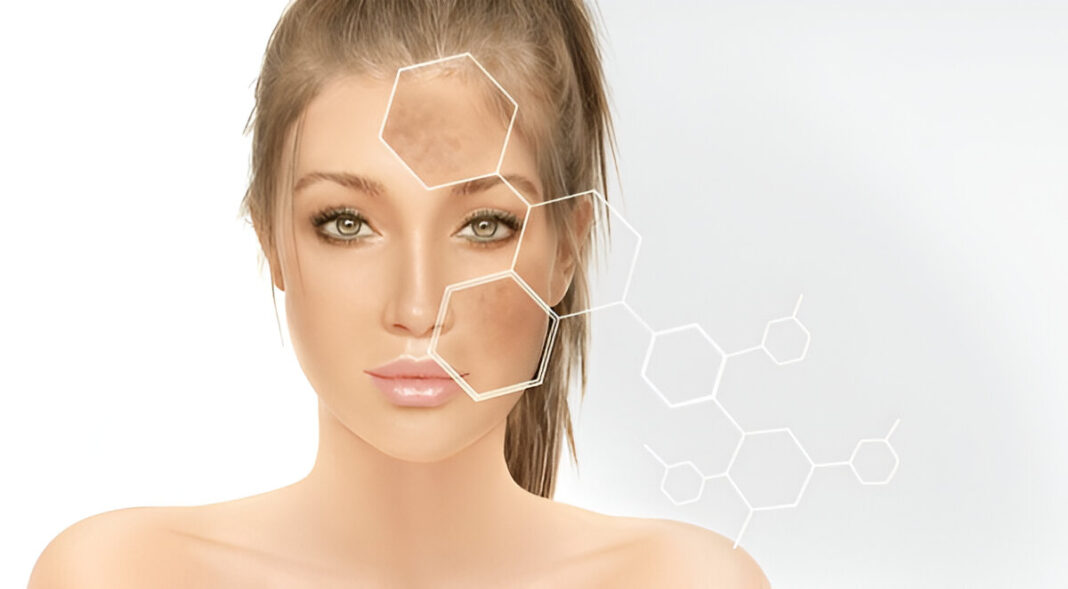You finally clear a stubborn acne breakout or soothe an eczema flare but in its place, a dark spot remains, sometimes for weeks or even months. This lingering discoloration is known as post-inflammatory hyperpigmentation (PIH), a common and often frustrating skin concern. Hyperpigmentation after inflammatory skin disease is especially prevalent in individuals with medium to dark skin tones, where melanin production is more reactive to injury or irritation.
Unlike scars, these marks aren’t textural but flat patches of increased pigmentation, and they can occur after almost any inflammatory skin condition. Understanding why PIH happens and how to manage it effectively is key to achieving clear, even-toned skin.
What Is Post-Inflammatory Hyperpigmentation (PIH)?
PIH refers to darkened spots that appear after the skin experiences inflammation, such as from acne, eczema, psoriasis, allergic reactions, or even minor injuries. It is not a scar but a temporary overproduction of melanin, the pigment responsible for skin color.
Key characteristics:
- Flat brown, tan, or grayish spots
- Occur at the site of previous inflammation
- More persistent in darker skin types (Fitzpatrick III–VI)
- Can last months or even years without treatment
Why Do Dark Spots Linger?
Inflammation triggers melanocytes (pigment-producing cells) to release excess melanin as part of the skin’s natural healing process. In darker skin, melanocytes are more active and reactive, leading to more pronounced and prolonged pigmentation (Taylor et al., 2006).
Factors that influence PIH severity and duration:
- Depth of inflammation: Deeper lesions (e.g., cystic acne) leave more stubborn marks
- Sun exposure: UV rays worsen pigmentation and slow fading
- Repeated trauma: Picking or scratching lesions increases PIH risk
- Underlying skin tone: Melanin-rich skin is more susceptible
Common Conditions That Leave PIH
Several inflammatory conditions are known culprits for causing PIH:
1. Acne Vulgaris
PIH is one of the most common complications of acne. Even mild breakouts can leave behind persistent dark spots, especially if picked or inflamed.
2. Eczema (Atopic Dermatitis)
Flare-ups can result in darkened patches, particularly in children and individuals with darker complexions.
3. Psoriasis
As plaques resolve, residual discoloration often remains, particularly in areas exposed to friction.
4. Contact Dermatitis and Insect Bites
Localized inflammation from allergens or bites may leave behind uneven pigmentation long after the swelling subsides.
Prevention: The First Line of Defense
The best way to manage PIH is to prevent inflammation or limit its severity in the first place.
Tips to reduce PIH risk:
- Avoid picking or squeezing skin lesions
- Use anti-inflammatory treatments early (topical steroids, antibiotics, etc.)
- Sun protection is critical: Daily use of SPF 30 or higher helps prevent UV-induced darkening of PIH (Draelos, 2007)
- Choose non-comedogenic skincare products to avoid breakouts
Treatment Options for PIH
Though PIH usually fades over time, many seek faster results through topical treatments and professional procedures.
1. Topical Lightening Agents
- Hydroquinone (2–4%): A gold-standard pigment suppressor, used short-term
- Azelaic acid (15–20%): Safe and effective for acne-related PIH, especially in darker skin (Grimes, 2006)
- Niacinamide: A gentle brightener that also calms inflammation
- Vitamin C (ascorbic acid): Antioxidant that helps lighten and prevent new pigmentation
2. Exfoliating Agents
- Retinoids (tretinoin, adapalene): Increase cell turnover and fade dark spots gradually
- Glycolic and lactic acids: Chemical exfoliants that help even skin tone
3. In-Office Treatments
- Chemical peels (mandelic or salicylic acid for darker skin)
- Microneedling: Stimulates collagen and disperses pigment over time
- Laser therapy: Fractional lasers or Q-switched Nd:YAG can be helpful, but must be used cautiously on melanin-rich skin
How Long Does PIH Last?
Duration varies depending on the depth of pigmentation, skin tone, and intervention strategies. Superficial PIH may resolve in 3–6 months, while deeper pigmentation can persist for a year or more without treatment.
When to See a Dermatologist
If dark spots aren’t improving after 2–3 months of consistent home treatment, or if you’re unsure whether you’re dealing with PIH or something else (like melasma or scarring), a dermatologist can provide personalized options and safe interventions.
Hyperpigmentation after inflammatory skin disease is a common and emotionally distressing issue, especially for people with darker skin. While these dark spots are not permanent scars, they can linger and become a cosmetic concern. The good news is, with the right combination of sun protection, skincare, and in-office treatments, PIH can be effectively managed and prevented. Empowering patients with knowledge and consistent routines remains key to fading these stubborn spots and restoring confidence.
References
- Draelos, Z. D. (2007). Skin lightening preparations and the hydroquinone controversy. Dermatologic Therapy, 20(5), 308–313. https://doi.org/10.1111/j.1529-8019.2007.00145.x
- Grimes, P. E. (2006). Management of hyperpigmentation in darker racial ethnic groups. Seminars in Cutaneous Medicine and Surgery, 25(3), 138–143. https://doi.org/10.1016/j.sder.2006.06.007
- Taylor, S. C., Cook-Bolden, F., Rahman, Z., & Strachan, D. (2006). Acne vulgaris in skin of color. Journal of the American Academy of Dermatology, 54(5), S62–S69. https://doi.org/10.1016/j.jaad.2005.01.048










